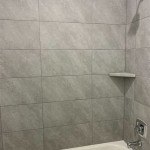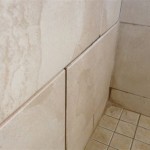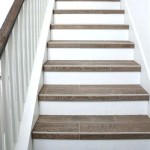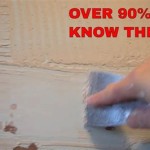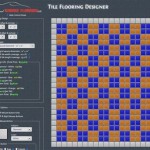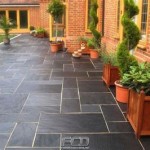Can You Install Tile Directly On Cement Board?
Cement board, a durable and moisture-resistant material, serves as a crucial substrate for tile installations in various areas, including bathrooms, kitchens, and exterior walls. While it offers a solid foundation for tile, whether you can directly install tile on cement board depends on several factors, including the type of cement board, tile, adhesive, and the specific project requirements.
Understanding the Basics
Cement board, also known as backer board, is a non-combustible, water-resistant material that provides a stable and smooth base for tile installation. It's primarily used in areas prone to moisture, such as showers, tubs, and backsplashes, where traditional drywall would quickly deteriorate.
There are two primary types of cement board: *
Cement backer board:
This is the most common type and is made of Portland cement, sand, and fibers. It offers excellent moisture resistance and is typically used for floor and wall installations. *Fiber cement board:
This type is made from a combination of Portland cement, wood fibers, and other materials. It's often used as a siding material but can also be used for interior applications.Understanding the specific characteristics of the cement board you're working with is crucial for determining if direct tile installation is feasible.
Advantages of Direct Tile Installation
Directly installing tile on cement board offers several advantages, including: *
Faster Installation:
Direct tile installation can be quicker than using a traditional mortar bed, as it eliminates the need for creating and curing a separate layer. *Reduced Thickness:
Direct installation can help minimize overall wall thickness, especially in areas where space is limited. *Cost-Effective:
By eliminating the need for extra layers, direct installation can potentially reduce material costs and labor time.Considerations for Direct Tile Installation
While direct tile installation on cement board can be beneficial, it's crucial to consider the following factors:
1. Tile Type and Size
The type and size of the tile can influence the feasibility of direct installation. *
Large Tiles:
Larger tiles can be more prone to cracking or movement if not properly supported. *Thin Tiles:
Thin tiles might not be suitable for direct installation, as they can easily show imperfections in the cement board. *Ceramic and Porcelain Tiles:
These are commonly used for direct installation, as they are durable and offer adequate adhesion. *Natural Stone Tiles:
Natural stone tiles can be more challenging to install directly, requiring special considerations and adhesives.2. Adhesive
Selecting the right adhesive is vital for successful direct tile installation. *
Thin-set Moter:
This is the most common type of adhesive used for direct tile installation. It comes in various formulations, and the selection depends on the type of tile and substrate. *Modified Thin-set Mortar:
This type offers improved adhesion and flexibility, particularly for larger format tiles or those prone to cracking. *Epoxy-based Adhesive:
This adhesive can provide strong adhesion to difficult substrates, like smooth cement board, but is typically more expensive.3. Cement Board Quality and Preparation
The quality and preparation of the cement board significantly affect the success of direct tile installation. *
Smooth Surfaces:
Ensure that the cement board is smooth and free of dust, debris, and uneven areas. Any imperfections can be addressed with sandpaper or a leveling compound. *Proper Installation:
The cement board should be properly secured to the wall or floor using screws or nails and installed according to the manufacturer's instructions. *Moisture Barrier:
In areas prone to moisture, install a moisture barrier behind the cement board to prevent water damage.4. Project Requirements and Professional Guidance
Not all projects are suitable for direct tile installation. Factors like structural movement, anticipated load on the tile, and complex design features might require alternative installation methods. It's always a good practice to seek expert advice from a qualified tile installer or contractor to ensure the best approach for your specific project.
In conclusion, understanding the nuances of direct tile installation on cement board is crucial for a successful and long-lasting result. By carefully considering the factors mentioned above and seeking professional guidance when necessary, you can ensure a durable and visually appealing tile installation that meets your project requirements.

How To Install Cement Board For Tile Projects Diy Family Handyman

How To Install Cement Board On A Floor Diy Family Handyman

How To Install Cement Board The Home Depot

How To Install Hardiebacker Cement Board On Floors James Hardie Pros
:max_bytes(150000):strip_icc()/can-you-install-tile-directly-on-concrete-1822600-04-458f7bb6c78348c1835cf8054ef36553.jpg?strip=all)
How To Install Tile Over Concrete

How To Install Cement Board The Home Depot

Tile Installation Backer Board Around A Bathtub Family Handyman

Tile Backerboard Material Options Fine Homebuilding

How To Install Cement Board Cbu For Floor Tile

Can I Install Tile On Cement Board
Related Posts

